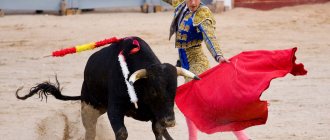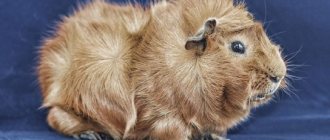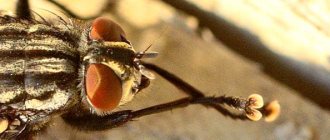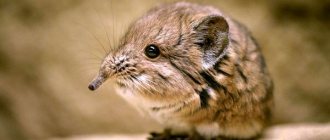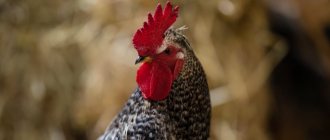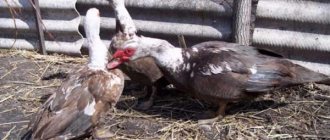The art of tauromachy, i.e. Bullfighting is an ancient form of wrestling, competition and entertainment not only on the Iberian Peninsula. Bullfights were carried out in Ancient Greece, and they are still popular in France, Latin America and even the Philippines. In the Middle Ages, in what is now Spain, bullfighting was part of a wedding ritual, when the groom stuck a dart with the bride’s ribbons into the bull’s withers. The word "bullfight" comes from the Spanish verb correr - to run. Bull running, literally, is still an annual national pastime in Pamplona. From the 15th century bullfighting gains popularity among noble knights. After the expulsion of the Moors, quiet times followed for some time. Out of boredom, the warriors went to try their luck in the arena. City squares, such as the Plaza Mayor in Madrid, were used as battle sites. However, the squares were rectangular in shape, and the bull could hide in a corner; since then, round arenas have been built. Even then, in the Middle Ages, they tried to ban bullfighting. Pope Pius V issued a special edict, which, however, was canceled by the will of the king. By the 18th century, bullfighting spread among the lower classes and again became a pedestrian sport. The poor people either did not have horses or were afraid to risk them, and the bull’s “rival” comes down to earth again.
In its modern form, bullfighting has been developing over the last hundred years. The peak of popularity came at the end of the 30s - the end of the Civil War. Along with the popularity, the voice of the protesters began to grow. Those who disagreed with such a cruel spectacle stood under the walls of the arena and knocked on metal objects before and during the bullfight. The noise of dissent can be heard even in the arena. There was a particular roar when, from the music and screams of the audience, it became clear to those outside that the bull had been killed. The Canary Islands banned bullfighting back in 1991. In July 2010, the Catalan Parliament decided to ban bullfighting in Catalonia from January 1, 2012. On September 25, 2011, according to various sources, from 18 to 20 thousand spectators gathered for the last bullfight at the Monumental stadium in Barcelona. However, the ban has not yet advanced further than the Canaries and Catalonia, and you can still see fights in Madrid, Seville or Granada.
According to the strength of the spectacle, bullfighting is divided into tourist and real. At the tourist stage, the nerves of the spectators are spared: a bullfighter rarely brings a bull to death. The bull's horns are also filed down so that he cannot injure the bullfighter, which does not always work in favor of the bullfighter, because... It becomes difficult to calculate the shot.
A real bullfight is not a spectacle for the faint of heart, and if tourists are offered organized excursions to this performance, they usually get the highest, farthest seats. Which makes sense, because... Not even all brave men can stand the sight of bullfighting.
Location
The arena is a round stadium with a sand arena and tiers like an ancient amphitheater. Has two sides: Sombre
(shadow) and
Sol
(sun). Sitting on stone or concrete tiers is not very comfortable, so before the performance, crimson pillows are distributed at the entrance.
The largest arena is Plaza Monumental
is located in Mexico City and seats 55,000 spectators. On days when there is no bullfighting, concerts are held in the arenas.
Barcelona has two arenas: Toros Monumental and Arenas de Barcelona. The latter, immediately after the ban on bullfighting, was rebuilt into a shopping center, preserving the historical facade, and in Toros Monumental there is a museum of tauromachy with a collection that includes posters, heads of the most furious and famous bulls, vignettes from ribbons of the “branded” colors of breeding plants, embroidered silk suits of famous matadors, picadors and horse bullfighters, brands for branding breeding animals. You can also see the pens where the bulls were waiting to be released.
They are one of the largest sources of greenhouse gas emissions
When bulls and cows digest food, fermentation produces large amounts of methane; Cattle produce between 250 and 500 liters of gas per day! Livestock production accounts for 14.5% of all emissions, and beef and dairy cattle are the highest methane emitters of all other animals. Since most of the planet's 1.4 billion bulls and cows are raised as livestock, reducing meat and dairy consumption could be an effective way to combat global warming.
Bull
Toro bravo, or Lydian fighting bull, is from 4 years old and weighs from 450 kg, this is the bull that is released into the arena. This breed is similar in phenotype to the aurochs and is carefully cultivated on ganaderias, special farms. Toro Bravo is a rather aggressive animal that attacks even without the need for defense. These bulls never hide like buffaloes, and always attack the enemy head-on.
The following toro bravo breeds are distinguished: Morucha Castellano (Boesilla), Navarrese, Gijona, Cacbrera and Gallardo, Vasqueño, Vega Villar and Vistahermosa. About 90% of all fighting bulls belong to the latter caste.
The most famous Ganaderia is Miura, where the most aggressive representatives of this breed are bred. It is in honor of the pets of this farm that the Los Miuras paso doble was written. The paso doble can be played at a bullfight both in honor of the matador and in honor of his opponent, the bull.
You can tell where the bull comes from by the colored pennant on the animal’s withers and from the poster that is shown before the bull comes out. If the bull performs well during the show and is pardoned, he is sent back to the farm and used only for breeding, but never enters the arena again. If the bull refuses to fight, it can be replaced with a spare one.
It is Toro Bravo that is depicted on the famous Osborne advertising posters placed throughout Spain.
Links[edit]
- Guía de campo de las razas autóctonas españolas
. Miguel A. Garcia Dori, Silvio Martinez Vicente and Fernando Orozco Piñan. Editorial Alianza, 1990, Madrid. Page 228. ISBN 84-206-0458-5 - Fraser, Evan and Rimas, Andrew. Beef: The Untold Story of How Milk, Meat, and Muscle Shaped the World.
Harper Collins, London, 2009 - "Spain clones first fighting bull". BBC
. May 19, 2010 - Richardson, Jock. La Divisa,
103, "Bull Ranch Basics." London Club Taurino. November–December 1996 - Fraser, Dr. Evan and Rimas, Andrew. Beef: The Untold Story of How Milk, Meat, and Muscle Shaped the World.
Harper Collins, London, 2009 - "Real Decreto 145/1996, de 2 de febrero, por el que se modifica y da nueva redacción al Reglamento de Espectáculos Taurinos". Noticias Jurídicas
. Retrieved September 6, 2022. - mundotoro.com Archived May 26, 2010, at the Wayback Machine.
- Origen. Ganadería Miura. Archived from the original on August 24, 2018.
- "Animals: Encierros of Pamplona". Time
. July 11, 1932. Retrieved May 12, 2010. - "ORDINARY PEOPLE: The best is dead". Time
. September 8, 1947. Retrieved May 12, 2010. - ↑
Villiers-Wardell, page 117 - Cossio, Los Toros
, tomo3: "
El Toro Bravo II
", ISBN 978-84-670-2531-6, Espasa Calpe, 2007, Spain, p. 584.
Bullfighter
Torero, bullfighter, also known as matador (killer).
Being a bullfighter is an honorable and dangerous occupation. Toreadors begin learning the art of tauromachy at the age of 10, by the age of 18 they enter the arena, and by the age of 40 they have already completed their career. In Spain, bullfighters are celebrities on a par with football players, and it is not at all shameful for the heiress of an aristocratic family to marry a bullfighter. During their career, bullfighters receive about 20 blows from the horn. One performance of the famous bullfighter costs from 100,000 euros. In an evening he can earn a million or give his life in battle with the enemy. The latest sad incident occurred in July of this year, when a 28-year-old bullfighter died in a fight with a bull in the city of Teruel.
There are also ladies among the bullfighters. Grace and agility are the main trump cards of women over male bullfighters. Only ladies are allowed to choose a bull for the fight themselves, and not by drawing lots.
A cow herd is led by one dominant male
Domestic cows are social animals and live in groups called herds. Each herd is led by a dominant bull, who is the only male to mate with the other females. Dominant males maintain their status until they are defeated by young males in fights.
Photo: GrazeLIFE
Mating can occur year-round, although the spring months produce the most calves. One calf is born after about nine months of gestation. He learns to recognize his mother and is able to stand and walk soon after birth. Bulls reach sexual or reproductive maturity at one year of age.
Bullfighter costume
Traje de luces, or costume of lights, is the official name for bullfighter clothing.
The suit is always handmade, weighs about 6 kilograms and serves the owner for an average of 4 seasons. The cost is about 3000 euros. The bullfighter's costume is bright with lots of gold and silver embroidery. However, all these braids, cords and pendants are carefully thought out and serve as additional protection against blows in battle. The suit is narrow, all the details are tight-fitting to the body to prevent the edge of the dress from accidentally catching on the bull's horn. For ease of movement, there are slits in the armpit area. The costume is complex, it takes at least an hour to get dressed, and sometimes the matador needs an assistant to get dressed.
Hover over the image below and clickable links will appear.
Montera - hat with ears made of astrakhan fur. In the last part of the bullfight, the bullfighter takes it off in front of his opponent. In modern times, bullfighters rarely wear long hair and the need to collect it in a net for protection has disappeared. But, paying tribute to tradition, each bullfighter has an overhead braid that is attached to his head. The cap is held on the same braid. Without a pigtail, a bullfighter is not a bullfighter, there is even such a proverb: cortarse la coleta (“cut off the pigtail”, i.e. retire, leave the arena forever).
A chaleco, a hard, quilted vest made of a special non-bending fabric, is worn on a white cambric shirt. On top of it is worn the chaquetilla - a short thick camisole with shoulder pads sewn on top and with slits under the arms. The camisole is decorated with gold and silver tassels.
At the waist of the bullfighter they wear a fajin - a wide multi-meter belt, which also forms a kind of corset. On the neck there is a sorbatin - a tie.
Taleguilla - narrow ankle-length trousers with suspenders. At the bottom, the trousers are tied with special laces with suspenders, at the end of which there are also tassels - machos. With these tassel laces, the trousers are finally adjusted to the ankle.
Medias - literally “long” silk stockings. They reach to the knee and are always pink. However, under them there are another stockings made of cotton and always white.
Zapatillas are bullfighter shoes, also known as manoletinas.
There are 4 more elements of the costume that are not worn, but carried out by hand:
Capote de paseo - ceremonial cloak. The most beautiful, luxurious part of the attire in which the bullfighter enters the arena in the opening ceremony of the bullfight.
Capote de brega is the basic work coat, pink on one side, yellow on the other. This cloak is used to tease the bull. Usually the pink side of the hood is turned towards the bull. But contrary to popular belief, the bull reacts not to the color of the cloak, but to sudden movements of it.
Muleta is a small red cloak stretched over a wooden stick about 50 cm long.
Estoque is a sword that, together with a muleta, completes the fight. In Spain they say - echar un capote - "to extend the cape", which means to lend a helping hand, as do the bullfighter's assistants. It happens that the bull knocks over the bullfighter and stabs him with his horns. At this moment, the assistants begin to wave their bonnets, diverting the bull's attention to themselves and saving the bullfighter's life. This is what echar un capote means - to lend a helping hand.
Why does the matador wear a red cape?
The fact is that the red cloak is needed to hide the blood stains of the bull when the matador defends himself against it with a sword.
Interesting materials:
How to restore VK by number? How to insert a page number in Word 2010 in the footer? How to enter a new number in WhatsApp? How to add a number to the blacklist? How to turn off Caller ID? How to block a range of Android numbers? How to block an unwanted number? How to block a number on a Samsung push-button? How to block numbers by first digits? How to block sending SMS to Android short numbers?
Bullfighting order
Bullfighting posters always contain the standard wording: “the performance will take place on such and such a date, if the weather does not prevent it, with the permission of the authorities and under their chairmanship.”
The chairman (the mayor of the city or a representative of the civil authorities) gives signals for the beginning of each phase of the bullfight and gives orders for the rewarding of the matador.
On the day of the fight, usually at noon, a sorteo is made - a draw of lots: representatives of the matadors visit the arena pen, where the bulls are drawn. The numbers of the bulls are placed in the hat, and representatives of the bullfighters take out the paper one by one. After sorting, the bulls are divided into individual pens until the evening. Female bullfighters have the right to choose their own bull.
The bullfight usually starts at 5 pm. The action begins with a parade of participants - paseo. The arena, the procession of participants to the sounds of a brass band, brilliant costumes - when you first visit a bullfight, this gives a feeling of joy, circus, and entertainment. But not to the Spaniards themselves and not to those who dared to go to the bullfight for the second time.
The bullfight is divided into 3 parts - tertia or suerte, i.e. luck. The beginning of each movement is announced by the sound of a trumpet.
First third
“Tercio de varas” (tercio de varas).
A bull is released from the pen, which is first met by bullfighter assistants with cloaks. The capote, a large pink and yellow cape to greet the bull, is used by both the matador and his subordinates. The cloak is heavy and is held with two hands. It is used both in artistic techniques and in combat itself. The fight with the bonnet is especially valued in Latin America. Then the picador rides out - the bullfighter’s mounted assistant, whose goal is to wound the bull at the withers and weaken the animal. The horse's eyes are covered with blinders. The bull strikes the horse's side with its horns. Since the 19th century, horses began to be protected with special armor that softened the blow. Injuries to horses in bullfights are common, so all arenas have a veterinary station. Sometimes the bull manages to turn the horse over, and then the rider is pinned down by the horse.
Second third
"Terce of banderillas." The purpose of this third is to measure the bull's rage without taking away his strength. Participants strive to “revive” the bull. Therefore, banderillas, i.e. short decorated spears, also called "pleasures".
Third third
"Faena" - preparing a bull for death and killing it with a sword.
The death of each matador's first bull must be dedicated to the chairman of the bullfight. Approaching him with his head uncovered and his arm outstretched, the bullfighter makes a dedicatory speech, after which he throws his hat into the arena over his shoulder. It is considered a good omen when a hat falls bottom down, but if it falls bottom up, it is often simply turned over for good luck. The bullfighter is in close proximity to the bull and carries out a series of classic passes that exhaust the animal. He then plunges the sword into the bull's heart. Usually the matador takes 3 or 4 attempts to strike with the sword before the bull falls.
The bull must be killed within 10 minutes after the start of the third third. If this does not happen, the bullfighter is given the first warning. After 3 minutes - the second one. If after another 2 minutes the bull is alive, then it is taken away to be sent to the farm. This development of events is a disgrace for the bullfighter.
In what country did rodeo originate?
The ability to work with a lasso on a horse was a very important quality for the cowboys of the Wild West, especially when it was necessary to separate the animal from the main herd. As a rule, calves that needed to be branded were separated from adult animals intended for sale. All these tasks required high skill of the rider and horse. The assessment of this skill became the basis for rodeo.
Rodeos are typical for western Canada and the United States. In many small towns in these regions, such events take place every year. Williams Lake in British Columbia and Calgary in Alberta are Canadian rodeo bastions. In Cody, Montana, these competitions are held regularly.
Rodeo, especially popular today in the Canadian province of Alberta and throughout the western United States, is the official state sport of Wyoming, South Dakota and Texas.
The famous silhouette image of a horseman taming a horse is a federal and state trademark of Wyoming.
The Alberta Legislative Assembly has considered making rodeo an official sport in the province. Outside the United States and Canada, rodeos are held:
We also recommend reading:
Musk ox (musk ox): behavior, nutrition, habitat Where buffalos live and live: raising domestic bulls Dwarf buffalo: lifestyle of the smallest bull Indian (water) and African buffalos
- Mexico,
- Guatemala,
- Salvador,
- Honduras,
- Nicaragua,
- Costa Rica,
- Panama, Cuba,
- Brazil,
- Argentina,
- Chile,
- Australia and New Zealand.
There are different disciplines used in Rodeo. This includes capturing calves with a lasso, riding a bare horse and a bull without a saddle, taming a wild horse with a saddle, capturing bulls with a lasso, etc.
Awards
If the bull is particularly brave, the public may ask the chairman to spare the bull's life.
And then the animal goes to the farm. Granting forgiveness by showing the bull's capabilities is the highest art. But if a matador dies in a fight with a bull, then the bull must be killed in any case. Honors can also be given to an animal that has already been killed. If the bull fought with dignity, then the mules that drag away the bull’s carcass make a victory lap around the arena, carrying the prostrate carcass in front of the entire audience to applause and music. The matador can take a victory lap around the arena. If most of the audience are waving white handkerchiefs, then the chairman awards one or two ears to the defeated bull. Two ears and a tail are the highest award. If the matador received two ears, then he already has the right to be carried out of the arena on the shoulders of spectators. The meat of the bulls is given to hospitals or sold the next morning at a certain market.
The audience may express disapproval in the form of silence, whistling, and even throwing pillows into the arena, which the spectator receives upon entry, in order to more comfortably sit on the stone tiers. However, pillows are an extreme measure and more likely characterize the viewer’s bad manners than his dissatisfaction.
More than a spectacle
The death of 29-year-old professional bullfighter Victor Barrio during a performance in Teruel (autonomous community of Aragon) has once again revived the voices of those who advocate a complete ban on bullfighting.
The death was the first in the last 30 years, but opponents of bullfighting believe that it is unacceptable to sacrifice the lives of not only people, but also bulls.
In fact, over the past decades, Spain has been forced to introduce serious restrictions on bullfighting due to pressure from international animal protection organizations and the European Union. The attitude towards bullfighting is also changing in Spanish society - among young people there are more and more of those who are either indifferent or negative towards this spectacle.
Nevertheless, the Spaniards do not dare to completely abandon bullfighting. After all, what for an outside observer is just a bloody spectacle, for the Spaniards themselves is an important part of their history and culture.
Prohibitions and reforms
By the 16th century, bullfighting had become the main entertainment spectacle in Spain, without which no major celebrations could take place.
In Madrid, battles took place in the central Plaza Mayor, where coronation celebrations and the burning of heretics also took place.
Problems with bullfighting, by the way, first began to arise in the 16th century. Pope Pius V issued an edict prohibiting bullfighting on pain of excommunication. The Spanish King Philip II stood up for bullfighting. He convinced the pontiff to revoke the edict, explaining that bullfighting was not empty entertainment, but training in the courage of true knights.
But King Philip V, a representative of the Bourbon dynasty, a native of France, considered bullfighting barbaric and imposed a ban on it.
At the beginning of the 18th century, however, the ancient tradition was revived, but in a significantly modified form. The birthplace of modern bullfighting was the province of Andalusia, and its participants were representatives of the lower class. These people either did not have horses at all, or were afraid to risk them, so they fought with bulls as foot soldiers.
From sacrifice to knightly tournament
Bullfighting originated a very long time ago, several thousand years ago. The Iberian tribes that inhabited the Iberian Peninsula revered the bull as a sacred animal. It was impossible to kill him just like that; this was allowed only if a sacrifice was made to the gods.
Scientists have found many rock paintings in this region depicting bulls and ritual games. The sacrifice of a bull was not a banal murder, but was framed as a duel, from which only well-prepared and physically strong members of the tribe could emerge victorious. Only the priests could commit the killing of the bull.
Fresco depicting "games with bulls". Photo: Public Domain
Centuries later, the religious meaning of the action was lost, but the tradition remained. During the rule of the Arabs, for the Spaniards, bullfighting became a way of military training and acquiring fighting skills.
By the end of the 15th century, that is, the time of the completion of the Reconquista and the unification of Spain, bullfighting became the entertainment of the noble class.
For Spain, bullfighting during this period became the original form of knightly tournaments. In those days, fighting with bulls involved not foot warriors, but horse warriors.
